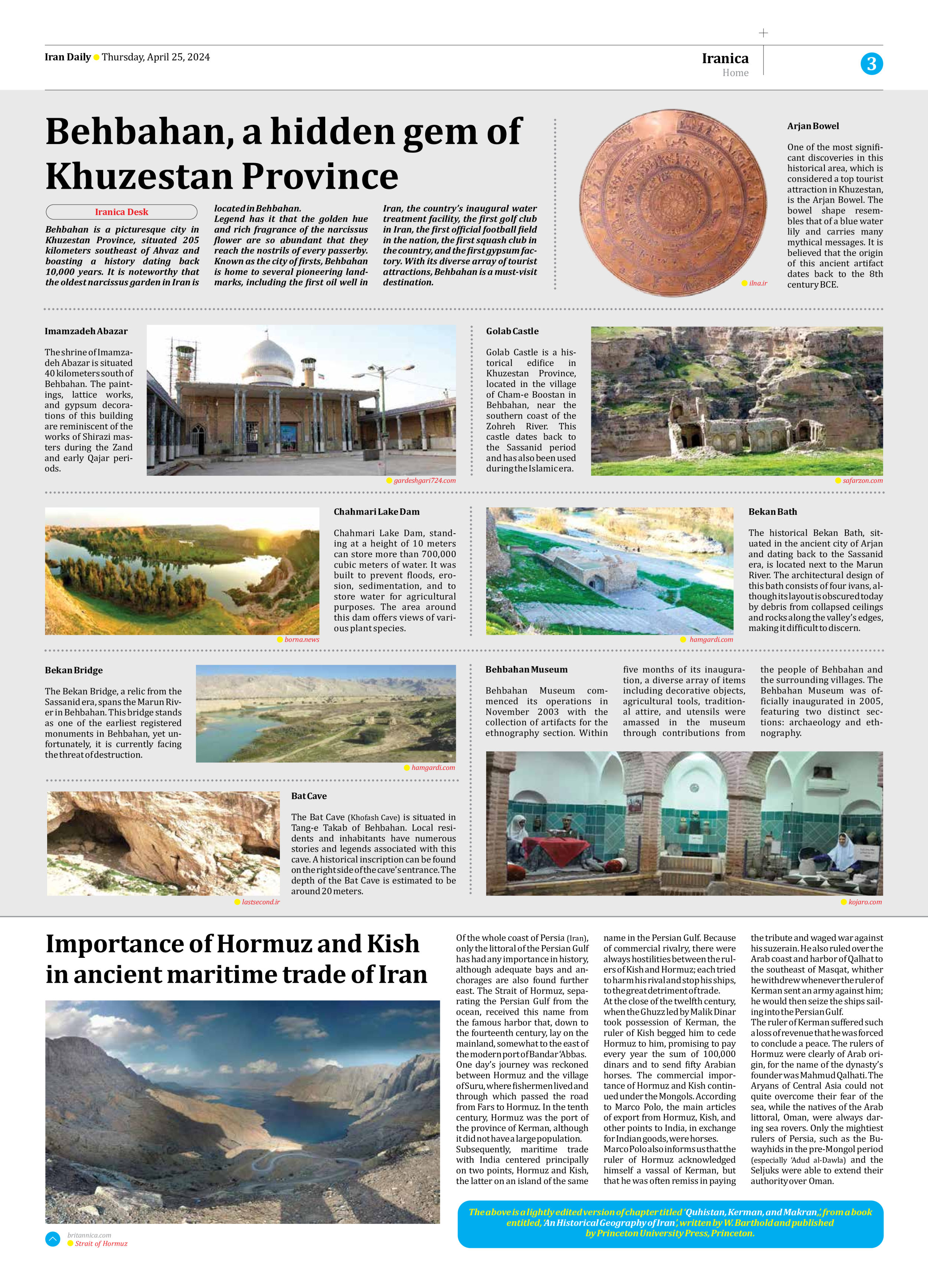
Copy in clipboard...
Importance of Hormuz and Kish in ancient maritime trade of Iran
One day’s journey was reckoned between Hormuz and the village of Suru, where fishermen lived and through which passed the road from Fars to Hormuz. In the tenth century, Hormuz was the port of the province of Kerman, although it did not have a large population.
Subsequently, maritime trade with India centered principally on two points, Hormuz and Kish, the latter on an island of the same name in the Persian Gulf. Because of commercial rivalry, there were always hostilities between the rulers of Kish and Hormuz; each tried to harm his rival and stop his ships, to the great detriment of trade.
At the close of the twelfth century, when the Ghuzz led by Malik Dinar took possession of Kerman, the ruler of Kish begged him to cede Hormuz to him, promising to pay every year the sum of 100,000 dinars and to send fifty Arabian horses. The commercial importance of Hormuz and Kish continued under the Mongols. According to Marco Polo, the main articles of export from Hormuz, Kish, and other points to India, in exchange for Indian goods, were horses.
Marco Polo also informs us that the ruler of Hormuz acknowledged himself a vassal of Kerman, but that he was often remiss in paying the tribute and waged war against his suzerain. He also ruled over the Arab coast and harbor of Qalhat to the southeast of Masqat, whither he withdrew whenever the ruler of Kerman sent an army against him; he would then seize the ships sailing into the Persian Gulf.
The ruler of Kerman suffered such a loss of revenue that he was forced to conclude a peace. The rulers of Hormuz were clearly of Arab origin, for the name of the dynasty’s founder was Mahmud Qalhati. The Aryans of Central Asia could not quite overcome their fear of the sea, while the natives of the Arab littoral, Oman, were always daring sea rovers. Only the mightiest rulers of Persia, such as the Buwayhids in the pre-Mongol period (especially ‘Adud al-Dawla) and the Seljuks were able to extend their authority over Oman.







